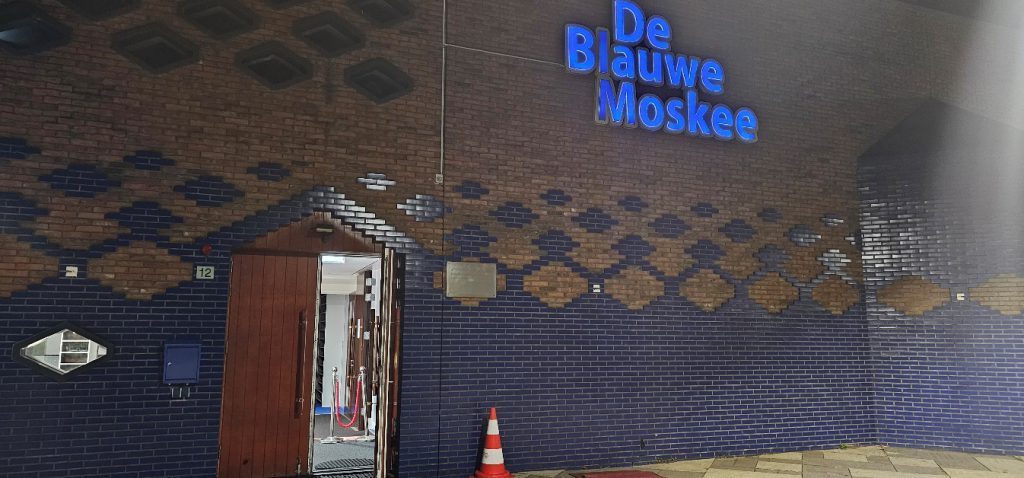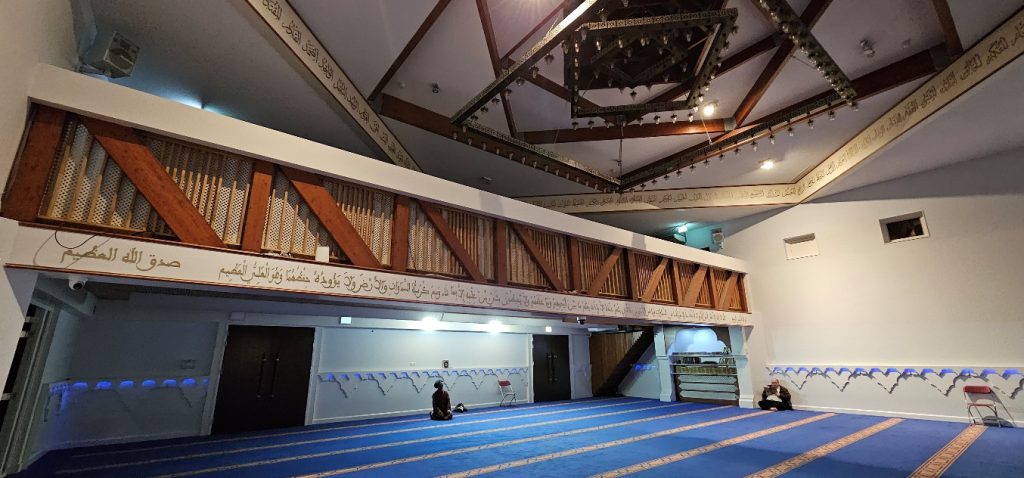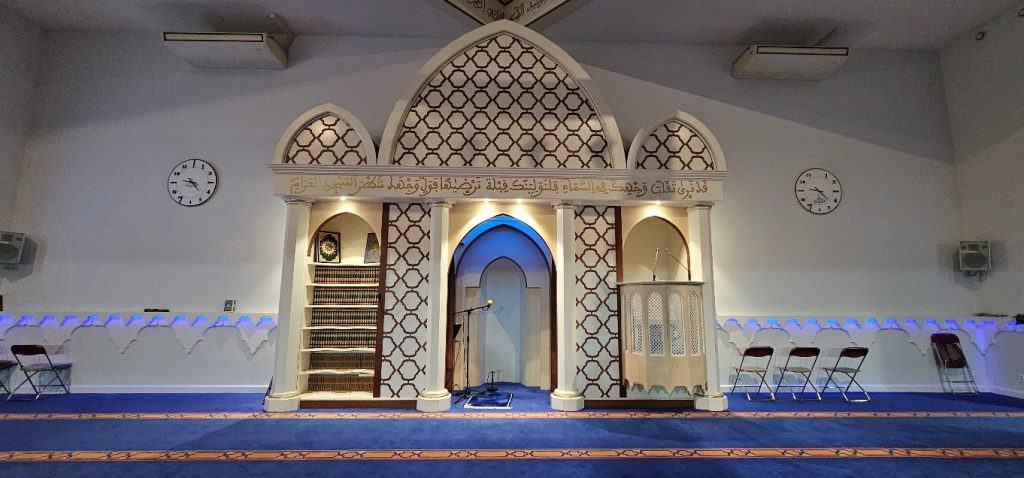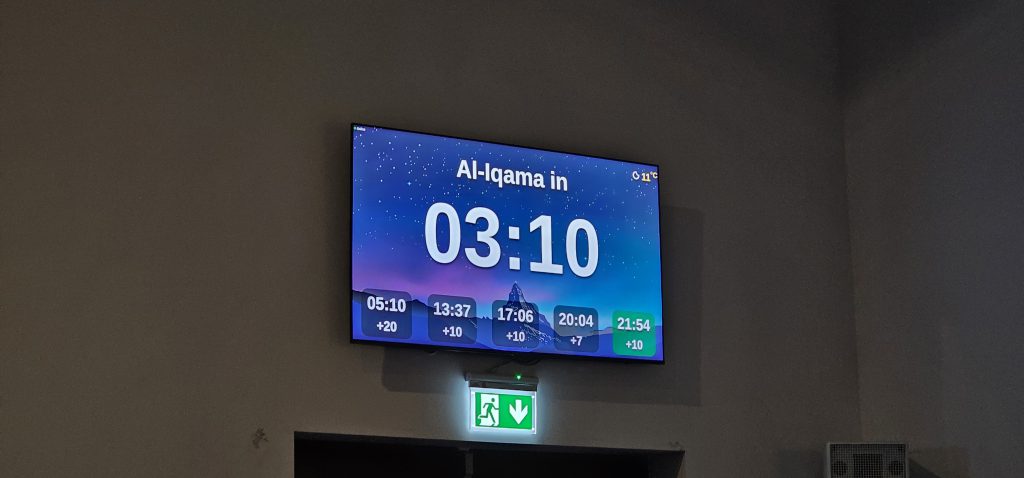On September 12th, I embarked on a 2-day work trip to IBC 2024 (International Broadcasting Convention), an annual event held in Amsterdam. Originally founded in 1967 and hosted in London for many years, the convention now takes place at Amsterdam’s RAI convention centre.
Initially, I planned to spend just a day at the event, flying out of Luton Airport at 7am and returning at 10pm on Friday. However, a partner company persuaded me to join them for the journey a day earlier, on Thursday the 12th, via Eurostar on the inaugural journey of The Flint Green Line.
The Flint Green Line was launched to promote greener travel to industry events. Considering the millions of trips people make to attend industry gatherings worldwide, it’s easy to see the significant environmental impact they generate. The Eurostar journey departed from St Pancras in London at 11:04 am, stopping in Lille, France, then Brussels, Belgium, and finally Rotterdam, Netherlands, before arriving in Amsterdam at 4pm.
With my delegate pass in hand and having checked into my hotel by 5pm, I found myself with an evening to spare. Inspired by Challenge Anneka (anyone remember?), I set myself a challenge: to visit as many mosques in Amsterdam as possible and observe the condition of its Muslim community. Between 5pm and 10pm, I managed to visit five mosques across all four quarters of inner Amsterdam, racking up a total of €100 Uber fares and around 16,000 steps. Here are some of the mosques I visited and my reflections on what I saw.
Muslim demographics of Amsterdam
Amsterdam is home to an estimated 90,000 Muslims, making up about 12% of the city’s population. For comparison, this is slightly higher than Luton’s 75,000 Muslims, who account for about 33% of its population, but much smaller than London’s 1.3 million. Nationally, Muslims make up around 6% of the Netherlands’ 18 million citizens. Like other cities in the Netherlands, Amsterdam’s Muslim population tends to be concentrated in less affluent neighbourhoods.
This 6% figure is similar to the UK’s Muslim population, and as in the UK, Muslims in the Netherlands have achieved prominent public roles. Notably, the mayor of Rotterdam and the Speaker of the House of Representatives have both been Muslim. From my observations, the Netherlands seemed to resemble a smaller version of the UK, not just in terms of its general culture resulting from almost everyone being able to fluently speak English, but also in terms of its Muslim presence. Islamic symbols, such as women wearing hijabs, were common in public spaces like Amsterdam’s airport. Arriving at Amsterdam’s Central train station, I even saw a large mosque, reminiscent of some UK cities.
The Muslim community in the Netherlands is predominantly of Turkish and Moroccan descent, which is predominantly a result of guest worker migration in the 1960s and 1970s. This contrasts with the UK, where Muslim communities are more ethnically diverse, and result from earlier post-war migration in the 1950s. More recently, there has been a steady increase in refugee-related migration from countries like Iraq, Syria and Afghanistan.
IMGM Mosque
The first mosque that I visited was the IMGM Mosque (Islamitische Stichting Milli Gorus Moskee) in Amsterdam. The mosque was closed at the time I visited so I could not go inside. It is a mosque affiliated with the Milli Gorus movement, which is one of the largest Turkish Islamic organisations in Europe. With roots in Türkiye it focuses on promoting Islamic values, social welfare, and the preservation of Turkish identity, particularly among Turkish diaspora communities in Europe. I did also notice the mosques was in the midst of fundraising, and given its location near an industrial area, it is likely that this mosque doubles up as community and educational hub.
The Ayax football stadium is within walking distance of a number of mosques. IMGM is one of them.
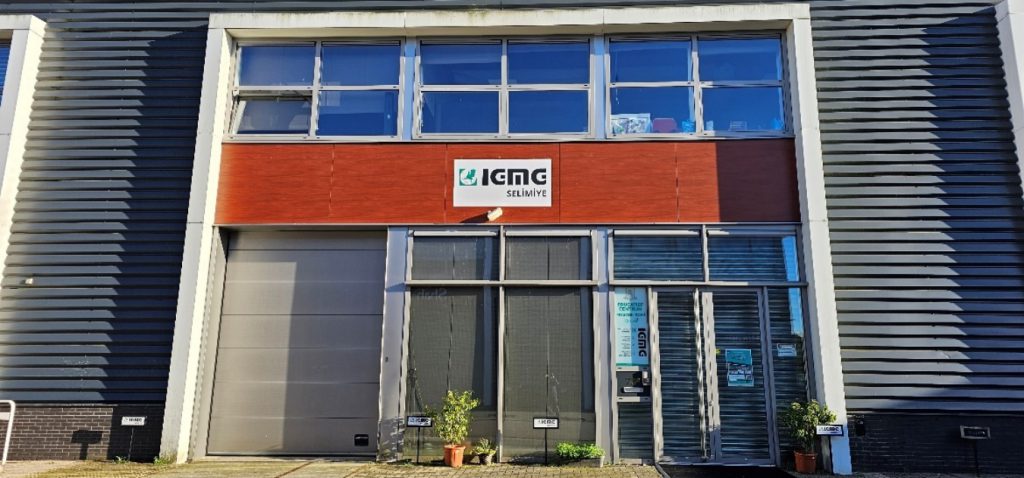

Taibah mosque
This mosque was established by Mawlana Shah Ahmed Noorani (d. 2003), the founder of the religious political party Jamiat Ulema-e-Pakistan (JUP). It has a distinctive Pakistani sub-culture, with mosque-goers wearing the traditional salwar kameez and the Barelvi head-cap, even the prayer was performed with customary oddities that you often find in Barelvi mosques. The ruku’ and sajdah, for example, were super quick and kissing of the fingers during the iqamah was strictly observed. Being Rabi’ al-Awwal, the mosque was well decorated with plenty of sufi symbols abound. On the day I visited they had a mawlid gathering, with food to be served. With less than 30 people at ‘Asr, not many attended the social engagement by the time I left, and there was no buzz about the place. Seemingly, it typified Islam as an ethnic sub-culture, fossilised, unable to adapt to modern European contexts.
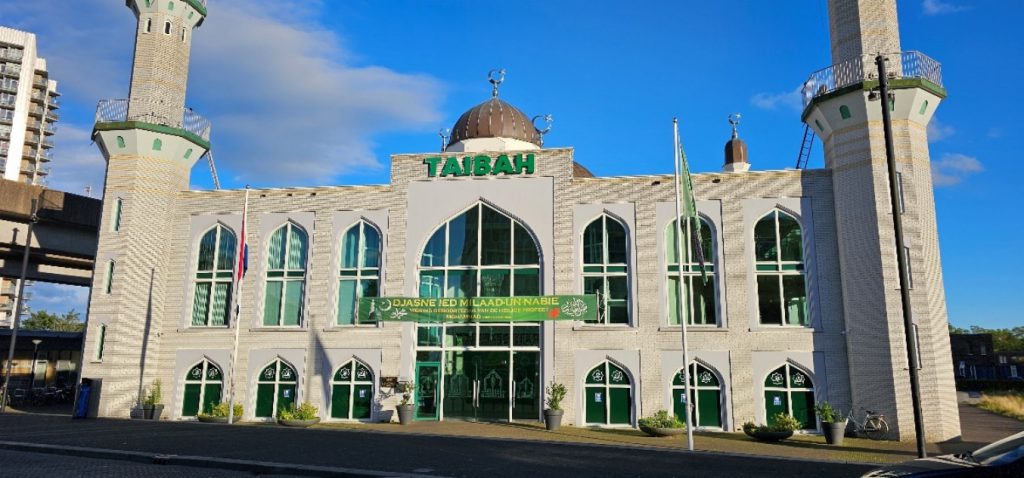
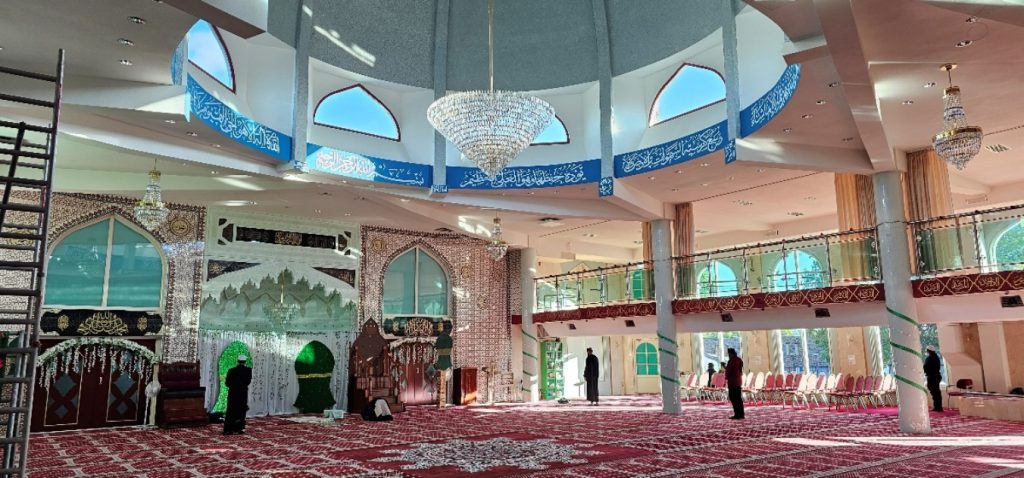
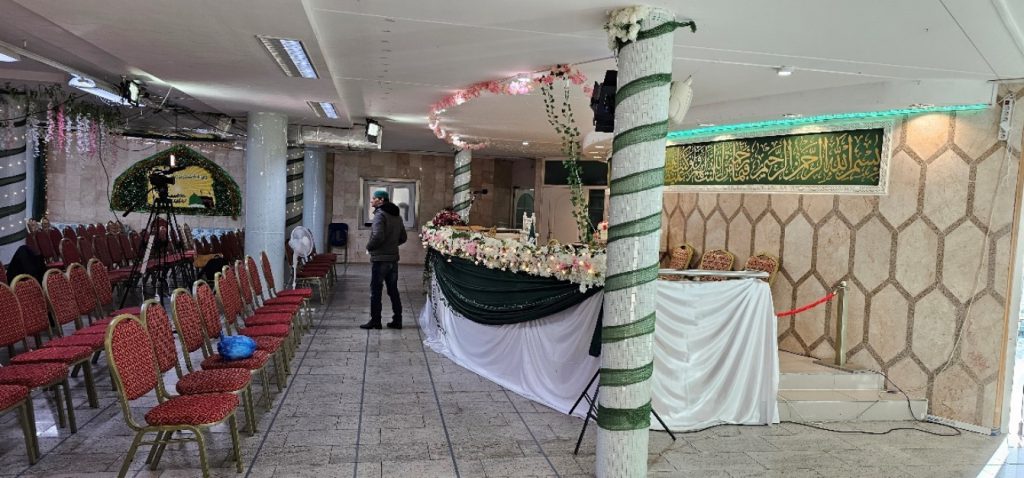
Al Fajr mosque
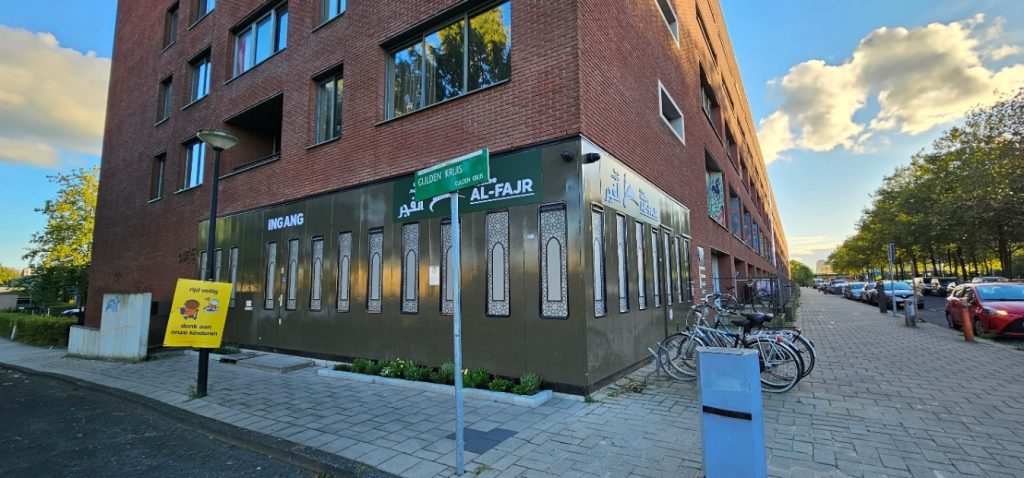
Fatih Mosque
The Amsterdam Fatih Mosque was converted from what used to be a Catholic church. I learnt from a description of its history mounted on the wall that prior to its conversion in 1980, the structure had been serving as a warehouse. Originally designed and built in 1890 by socialist architect Adam Nieuwenhuis, the building then known as Constantia, was purchased by the Free Socialist Workers Movement to serve as a meeting place. Ferdinand Domela Niewenhuis, a well-known Dutch socialist politician of the time and one of the movements leaders, also attended the Constantia meetings. Mortgage debts however forced the movement to sell the property in 1899. It was purchased by the head of a secret Jesuit Church called De Zaaler.
The De Zaaler Church, which was established in the attic of a house near the Keizersgratch Canal, used the Constantia building until its demolition in 1925. Architect Hendrik Willem Valk was commissions to design a church building, which was completed in 1929 and served as the St Ignatius Church until 1971, when it was rented from the Parish Council by a businessman, who then converted it into a warehouse for carpets and musical instruments.
The building was eventually bought by the Amsterdam Turkish Muslim community in 1990 and converted it into a mosque. It has two 40-metre tall towers and can accommodate 1000 people in prayer. The structure had to be extensively restored before it could be used as a mosque. Most notably, the cross, which still stood atop the structure was replaced with a crescent amid the main entrance gate was closed and turned into a prayer niche, indicating the direction of the Kaaba. In 1986, the mosque became part of the Islamic Foundation for the Netherlands (Islamitsche Stichting Nederlands – HDV) and it continues to serve as a place of worship under the name Fatih Mosque.
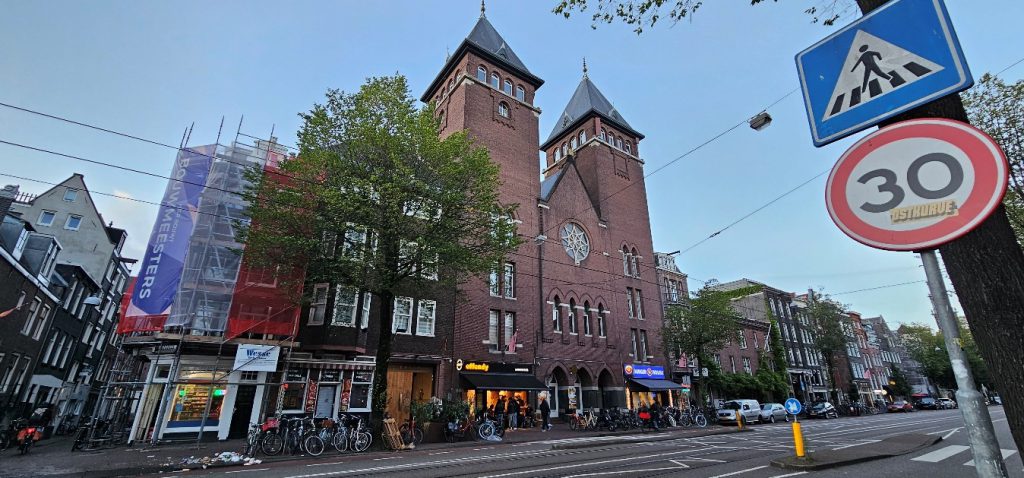
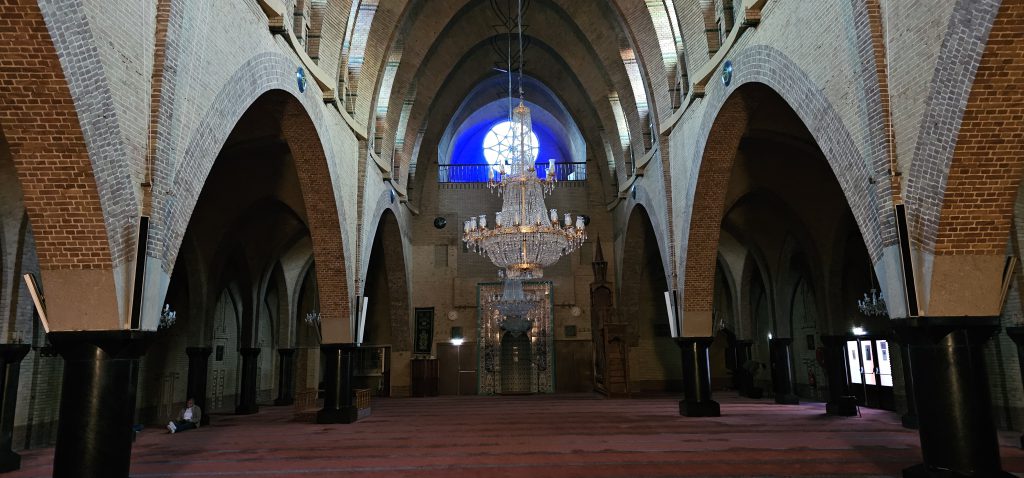
Minbar view:

Back view:
Hagia Sophia Mosque
The Hagia Sophia Mosque in Amsterdam was by far the most architecturally elegant mosque that I visited. Located in the city’s Nieuw-West district, it is named after the famous Hagia Sophia in Istanbul, reflecting the Turkish-Dutch Muslim community that operate and founded the mosque. The mosque’s architectural design and brickwork seamlessly blend with the surrounding developments, adding both a sense of belonging and aesthetic value to the area. It is particularly stunning at night, helped by lighting that draws out the exterior design features of the mosque.
The Muslim community faced a lengthy process to obtain planning permission, which took around 12 years, and opening officially in 1995. The mosque’s construction was part of ongoing negotiations between the local Dutch-Turkish community, the city authorities, and neighbourhood residents. However, in retrospect, they have done an excellent job of integrating the mosque into the local environment. It enhances the neighbourhood rather than appearing out of place or as an eyesore.
Inside the mosque, there is no need for a sound system due to its interior architecture, which naturally enhances acoustics. The open space in the main hall, along with its curved surfaces, high ceilings, domes, arches, and strategically positioned walls, amplifies and distributes sound evenly throughout the prayer hall. The Maghrib call to prayer (azan), when recited from the center of the main hall, is effortlessly carried to the entire mosque. Similarly, the imam’s voice is clearly heard by everyone inside.
Unlike the Taibah mosque, I did not detect any parochial sub-culture. The prayer was performed to expected quality and no one was wearing seemingly out-of-place clothing. As is customary in Turkey and other places, there the Qur’an was recited after the prayer, too, accompanied by a collective dua’.
The mosque also has an attached retardant, where, rather bland, but nutritious Turkish food can be eaten. The mosque also has a clean wudu facilities and toilet area.

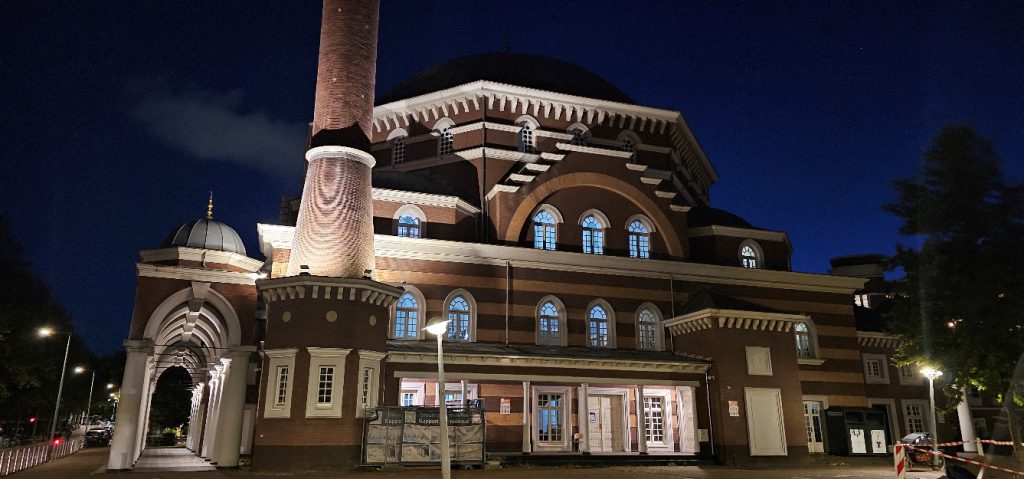
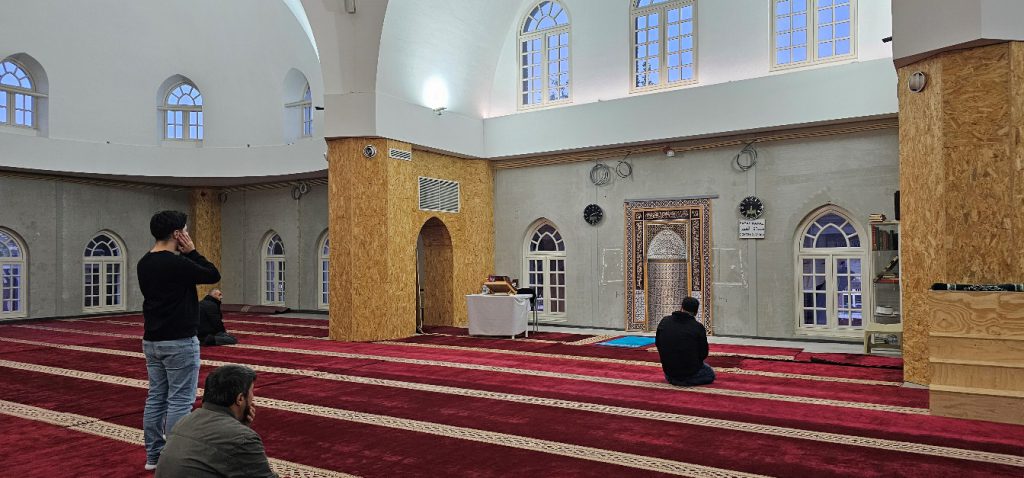


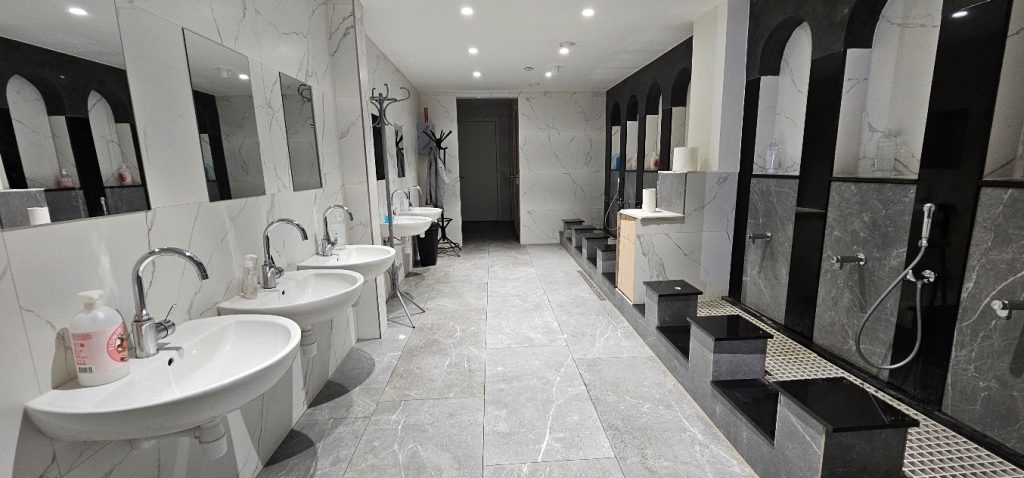

De Blauwee Moskee (Blue Mosque)
True to its name, this mosque has a running blue colour theme and has contemporary feel blended with traditional design, including its blue dome and interior decor. Located in the Nieuw-West district, it opened in 2008. The mosque is known for interfaith dialogue and community cohesion, hosts events aimed at bridging gaps between different religious and cultural groups in the city. Like the Cambridge Mosque, it was built with eco-friendly materials and is equipped with solar panels.
What I found very useful was the countdown to prayer that counts down from the Azan to show when the prayer would begin, which I thought was an excellent way of preparing congregants to get ready for prayer. The Isha salah was well attended and there was a good mix of young and old attending. I thought to myself that this is a good sign of the spiritual health and well-being of the mosque. Moreso than any of the other four mosques that I visited in the 5 hours to spare that I had.
